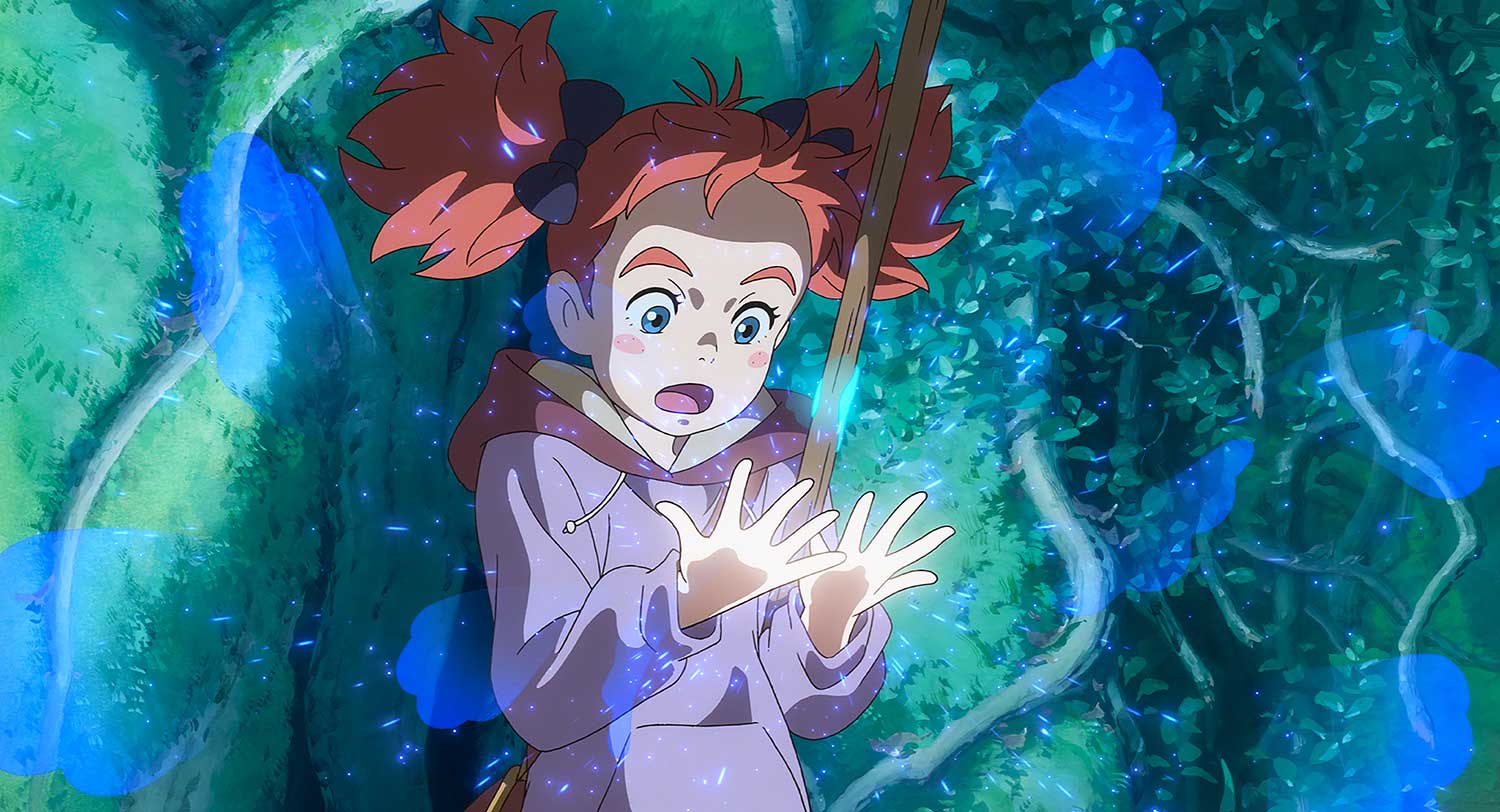It’s nearly unfair how director Hiromasa Yonebayashi lures us into a false sense of security within in the whimsical opening moments of his latest film, “Mary and the Witch’s Flower,” and the first for Studio Ponoc. Founded by Yoshiaki Nishimura along with several former Studio Ghibli animators, the comparisons to the disbanded titan of a studio were always going to persist, warranted or not. With the first film out of the gate there are moments where that same magic is captured and the worlds bound, capturing the audience’s hearts before turning the corner into a rather drably told folktale. The first few minutes are the greatest example with an unknown fortress on fire as a young woman makes a daring escape, with images that evoke the tragic wonder of “Nausicaä of the Valley of the Wind” and the heart racing adventure of “Castle in the Sky.” Those moments are fleeting, however, a great shame considering beneath the flat worlds and bumpy dialogue lies a tremendous story where magic and science are one in the same and nature is bound to overcome.
It isn’t a bad film perse and while it doesn’t scrape the heights of any of legendary Hayao Miyazaki works (an unfair assessment before seeing all of the similarities without the soul), following such a lackluster year for animation (even when you dig), it’s a breath of fresh air to see such wonderful hand drawn creations in a sea of CGI sameness. The melancholy ghost story “When Marnie Was There” remains Yonebayashi’s most accomplished, singular work but “Mary and the Witch’s Flower” while slight and rather soulless promises a talent and vision that could allow this level of animated artistry to continue to soar.
Based on the popular children’s book “The Little Broomstick,” “Mary and the Witch’s Flower” follows the titular Mary (Ruby Barnhill) as she spends her summer bored and aimless with her Great Aunt. Insecure about her unkempt and unruly red hair and her lack of proven skill, she’s yearning for some excitement in her relatively calm life. This adventure comes crashing into her one day when traipsing in the woods she comes across the “fly-by-night” flowers, blue bulbs that look as if they possess shooting stars, otherwise known as the “witch’s flower.” Possessed with the ability to perform magic, Mary is transported to another realm and to Endo College where mischief, mayhem and danger awaits.
There are familiar, but comforting, trappings of the story as we see in many a children’s tale where the protagonist suddenly discovers a great power. And the folklore nature of the story it’s based on allows for a rather matter of fact look at what magic is. In this world (as was the case with many a Ghibli world) nature has been overtaken by some unknown force, magic to the naked eye but science really when you look deeper. Machinery takes over the forest, metal growing up trees. Animals are put under grotesque scientific testing and any imposters changed into beings unlike themselves. There’s a message that comes and goes that nature should be left untempered with, allowed to grow and thrive on its own rather than be consumed by one person’s want for power.
This message, this story about one young girls plight and even the background sobering threads of parents who are sick or absent all present the idea of “what might’ve been.” Instead of ever allowing the film to linger in a moment we’re wooshed past in and by the time that major conflict has presented itself we’ve barely been given a moment to know these characters or, most importantly, care for them. We’re told things rather than shown, and characters don’t so much develop over the film rather than be forced into new situations and given new tasks to move them from act one to act two. It’s a shallow film, a pretty to look at story with little substance.
When the animation hits its highpoints, the film sings, and it’s never better than in the calm, dewey moments where we watch the fog roll over the countryside are catch the sunlight between the blade of grass. It drips like a watercolor, bleeding one frame into the next and it’s as expertly composed as you can hope from a film of this caliber. The moments at Endor lack a pop needed to bring the images from feeling too flat, but the scenery set in the great outdoors more than makes up for it. Accompanied by the lovely, plucky score composed by Muramatsu Takatsugu, this is when the magic of the film feels present.
It’s aggravating just how close the entire team came to creating a picture worthy of its predecessors, and with room to grow there’s no doubt Studio Ponoc will become a behemoth of astonishing works of cinema. For now, however, we’re witnessing the stumbling building blocks of a home for welcomed talents and it’s frustrating, comforting and vacant. It’s thrilling to have any semblance of Studio Ghibli back in our theaters and “Mary and the Witch’s Flower” will momentarily satisfy that hunger, but will leave you wanting more. [C]





